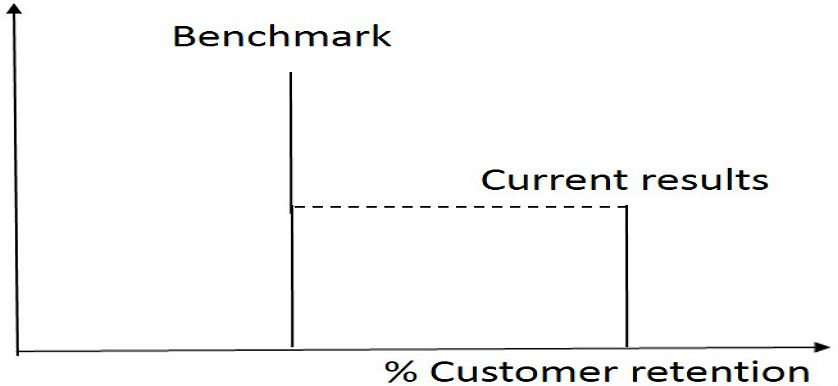The Role of Benchmarking within the Six Sigma Methodology

Since stakeholders’ expectations are constantly increasing and they expect better and better products & services at a lower price in a shorter time, organizations must thrive to improve and innovate all the time.
One of the best known methodologies used by organizations for constant operational performance improvement is the Six Sigma methodology, which has its roots in statistical engineering and is an “integrated, disciplined and data driven approach for reducing defects and producing measurable financial results.”
Through the use of 5 core stages, a cycle generally known as DMAIC – define, measure, analyze, improve and control – Sig Sigma aims at generating continuous improvement, optimization and stabilization of a business.
Benchmarking plays an important role within the Six Sigma methodology as it enables Six Sigma practitioners to drive improvement by helping them obtain the measurements or the standard for the data they want to analyze.
Better said, in the analysis phase of Six Sigma, benchmarking helps set the “what” that needs to be measured in order to identify performance gaps. Moreover, benchmarking enables Six Sigma specialists to shape the strategy and set targets for the benchmarks selected according to the industry standards.
When using a benchmarking project for choosing the benchmarks against which to measure the current performance of an organization with the purpose of generating improvements, Six Sigma practitioners have to take into consideration several aspects.
Firstly, the selected benchmarks need to align with the strategy of the organization. Comparing the strategic objectives of the benchmarking partners with your own organization’s strategic objectives is the first step in choosing the benchmarks correctly.
One has to ensure that the indicators measured reflect what they want to improve, not what other companies focus on. For example, if an organization’s strategic objective is to improve their performance within the customer service department and their benchmarking partner’s objective is to optimize production it is common sense that most of the indicators measured by the benchmarking partner will reflect production measures and fewer will assess the customer service department.
Hence, when choosing the benchmarks for a particular functional area, an organization has to ensure that the indicators compared reflect directly their focus areas, as well as to make sure that their benchmarking partners do perform at an optimum level in that area, even though they focus on a different one.

Secondly, as already discussed above, improvement specialists will have to take into consideration the profile and strategy of their benchmarking partners when deciding on the benchmarks upon which to base their improvement process.
Going beyond just the strategy, if a newcomer on the market is benchmarking itself with the best in class, the company profile and features need to be taken into consideration because the benchmarking partner will most likely face different challenges.
For the newcomer, the biggest challenge might be to secure their place on the market, while for the best in class to innovate in order not to lose market share. This implies that the indicators and the targets set by each organization for the indicators will be different.Moreover, Six Sigma specialists should make sure they understand what their benchmarking partners measure through a particular indicator.
Given the fact that the name of the indicators might not be standardized within the entire industry and most organizations use they own way of formulating the name of indicators, one has to check the definition of the indicators as understood by the other organization and standardize or normalize the results as to make them comparable.
We also argued that benchmarks can be a helpful tool for shaping the strategy. This is because all functional areas within an organization are interconnected and change, be it positive or negative, in one of them triggers change in other areas as well.
Going back to the previous example, although our focus is on the customer department, a benchmarking project with partners which have a different strategy can pinpoint to greater issues in other departments. For instance, low performance in the production department can lead to unsatisfied customers and negatively affect the customer service department.
This will make the improvement managers to shift focus to the performance of the production department in order to address the root cause and so it will force them reshape the strategy and its objectives.
Thirdly, benchmarks can help the target setting process and the graph below shows how benchmarking can help Six Sigma practitioners with target setting in the case of % Customer retention.

However, when setting the target, it is important to know the resources available and be able to set a target according to the resources.
For example, a new organization on the market will surely not have the financial and human resources needed to set their targets according to the performance results of the best in class, but they can aim to set the target according to the industry average or to the average of the best performers among organizations which entered the market in the last two years.
In conclusion, the benchmarking process can be a real help for Six Sigma practitioners, especially in the analysis given the fact that it helps them:
- Choose what they need to measure;
- Shape the strategy in order to make sure it is relevant and fosters improvements;
- Set realistic targets aligned to the industry standards.

Tags: Benchmarking, operational performance, Six Sigma





